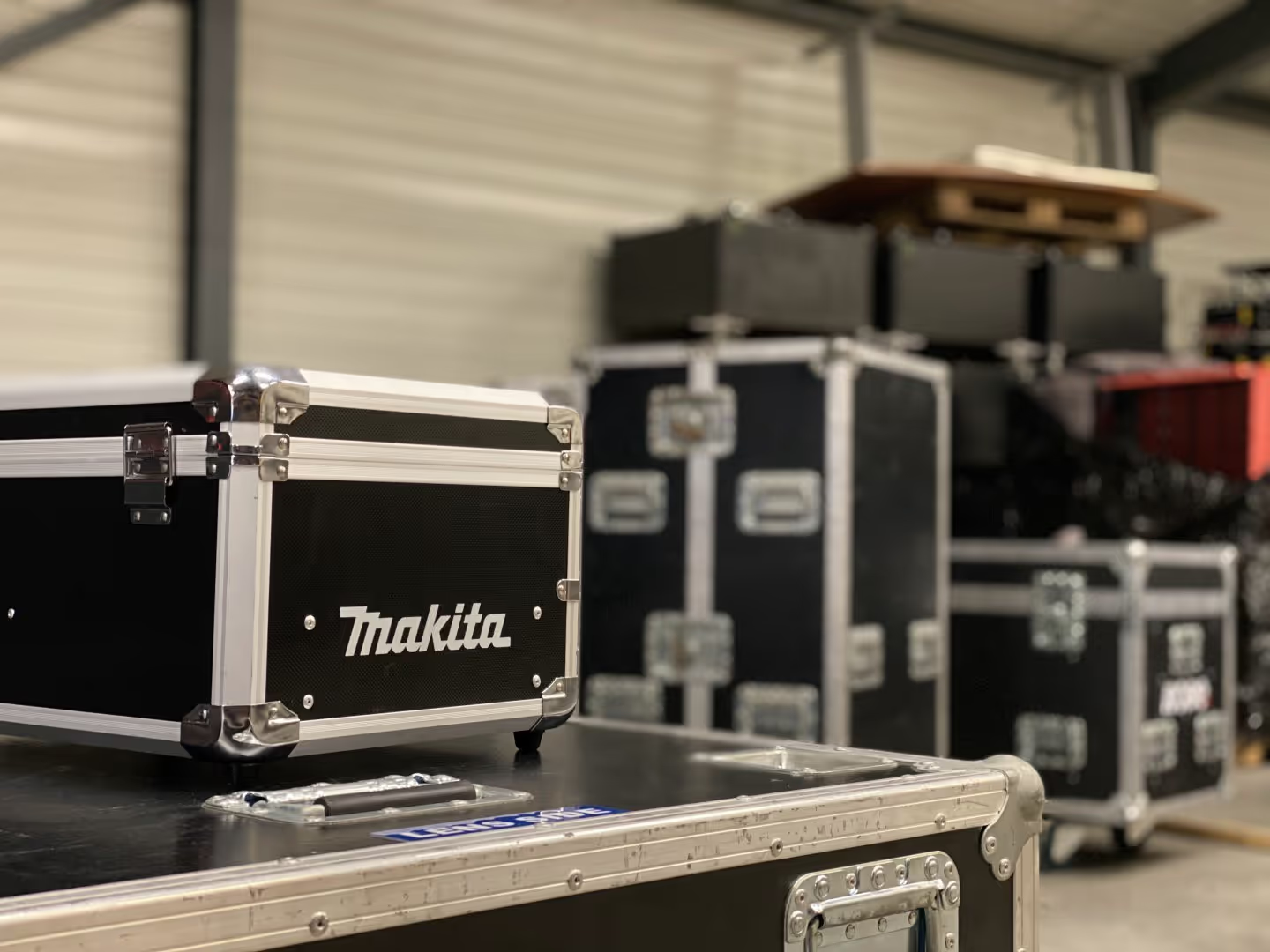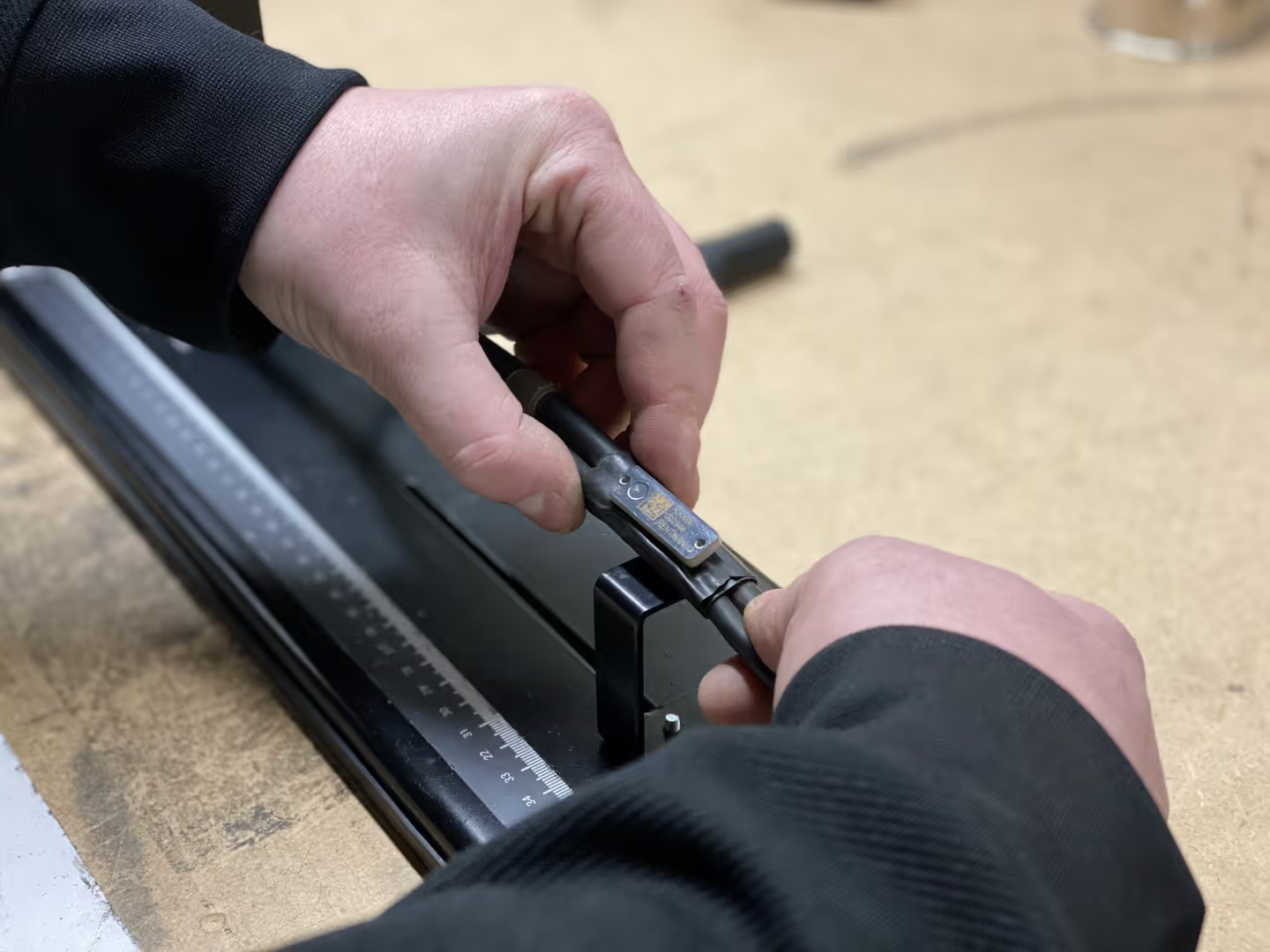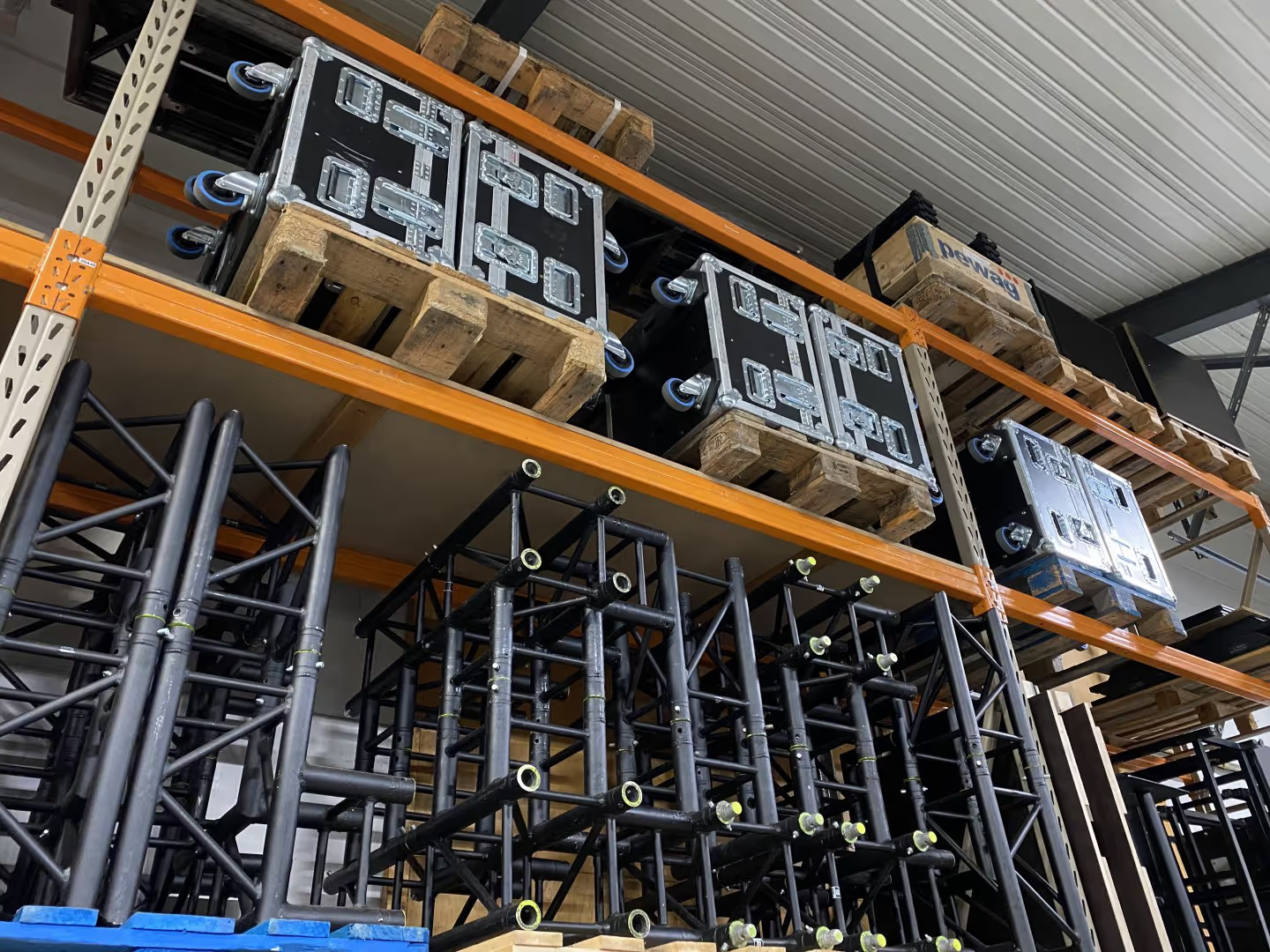The Ultimate Guide to Equipment Coverage in the Event Industry: What You Need to Know

Navigating the world of equipment coverage and personal finance in the event industry can seem daunting, but understanding its essentials is crucial for anyone looking to protect their valuable assets. Whether you're an event production company, a freelancer in event management, or a small event rental business, ensuring your gear is adequately insured against damage or loss is a practical step towards financial security. This guide aims to demystify the concept of equipment coverage, offering clear and straightforward insights into what it entails and why it's important for the event industry.
By exploring the key elements of equipment insurance covers and a good coverage plan, you'll be better equipped to make informed decisions about safeguarding your equipment and investments. Let's delve into the fundamental aspects of equipment coverage and how it can benefit your event business.
1. Understanding Equipment Coverage
2. Types of Equipment Coverage
3. Key Factors to Consider
Understanding Equipment Coverage
What Is Equipment Coverage?
Equipment coverage is a form of insurance designed to protect your valuable items against unforeseen events like theft, damage, or loss. Whether you own professional sound systems, lighting rigs, staging gear, or audiovisual equipment, this coverage provides a financial safety net. It ensures you won't bear the full cost of repairs or replacements should something go wrong with the tools essential to event production.
Unlike standard business insurance, equipment coverage specifically caters to the unique needs of event-related assets, offering tailored protection. This type of insurance can cover a broad array of items, from cameras and projectors to large-scale industrial machines like trusses and generators. Its scope can vary, sometimes including accidental damage, environmental hazards at outdoor events, and even temporary replacements for rented or essential gear.
Understanding the specifics of your policy is crucial, as it determines what risks are covered under equipment breakdown policies and any exclusions that may apply. In essence, equipment coverage acts as a financial shield, safeguarding your investments in event production equipment and providing peace of mind.
Importance of Equipment Coverage
The significance of equipment coverage cannot be overstated, especially for individuals and companies that heavily depend on their tools and machinery in the event industry. The financial implications of losing or damaging vital event equipment can be severe, potentially stalling productions, delaying projects, and impacting revenue from booked events. By investing in equipment coverage, you mitigate these risks, ensuring that unexpected incidents don't lead to substantial financial burdens.
Moreover, having this insurance can enhance your credibility with clients and partners, demonstrating that you take your responsibilities seriously and are prepared for unforeseen situations. Equipment coverage also provides peace of mind, allowing you to focus on delivering seamless events without constantly worrying about potential mishaps or malfunctions. In an increasingly unpredictable world, especially in the dynamic and fast-paced event industry, such protection is not merely a luxury but a necessity.
Proper, equipment breakdown insurance coverage ensures continuity, stability, and reinforces your ability to recover swiftly from setbacks, keeping your event operations running smoothly.
Common Misconceptions
Many misconceptions surround equipment coverage in the event industry, leading to misunderstandings about its necessity and scope. A prevalent myth is that standard business insurance policies automatically cover all event equipment, which isn't always the case. These policies often have limitations on how much coverage, and may exclude specific types of gear like rented equipment or items used at outdoor events.
Another common fallacy is believing that equipment coverage is overly expensive and only suitable for large event production companies. In reality, policies are available for various budgets and can be tailored to fit the needs of event freelancers and small businesses alike. Additionally, some assume that equipment coverage is unnecessary if they've never experienced equipment failure, theft, or loss during an event.
However, past experiences are no guarantee against future mishaps, and the high cost to repair and of replacing specialized event gear makes this coverage essential. It's also a mistake to think that all equipment insurance policies are the same; coverage details can vary significantly between providers. Understanding these nuances is essential to avoid gaps in protection and to ensure your event equipment is adequately covered against all potential risks.
Types of Equipment Coverage
Comprehensive Coverage Options
Comprehensive coverage options provide extensive protection for a wide range of event-related equipment, ensuring that you're covered for various scenarios. This type of policy typically includes protection against theft, accidental damage, and natural disasters, offering peace of mind whether you're managing outdoor events, transporting equipment between venues, or operating in high-risk environments.
Comprehensive coverage is particularly beneficial for event production companies and freelancers who frequently move expensive gear like sound systems, lighting setups, and AV equipment, where the risks of damage or loss are inherently higher. These policies often also cover the costs of temporary replacements, ensuring minimal disruption to your event schedule. It is essential to carefully review the terms and limits of comprehensive event equipment breakdown insurance coverage, as these can vary greatly between providers.
Some may offer additional features like worldwide coverage for international events or protection against electrical or mechanical breakdowns of equipment such as power generators or trussing systems. While more extensive, comprehensive options may come at a higher premium, the breadth of coverage they provide can be a worthwhile investment, safeguarding your equipment and ensuring financial stability in the face of unexpected events that could disrupt an event.
Specialised Equipment Policies
Specialised equipment policies are tailored to cover specific types of gear, addressing unique risks that standard policies may overlook in the event production industry. These policies are ideal for professionals who use niche event gear, such as lighting designers, sound engineers, or stage production specialists, whose tools and equipment are often highly specialised and expensive. For example, a sound engineer’s policy might include coverage for mixing consoles, microphones, and soundboards, while a lighting designer's policy might protect moving head lights, dimmer packs, and control consoles.
Additionally, audiovisual companies might find coverage for projectors, LED screens, and other high-value technology used in corporate or entertainment events. These policies often include clauses for international use, recognising that event professionals might need to travel with their equipment to different venues or countries.
By opting for a specialised policy, you ensure comprehensive protection that aligns with the particular demands and risks associated with your work in event production. This level of tailored coverage not only safeguards your investment but also allows you to focus on delivering exceptional events, knowing that your essential tools are protected against a wide range of potential hazards.
Temporary vs Permanent Coverage
When considering equipment coverage for events, it's crucial to distinguish between temporary and permanent options. Temporary coverage is designed for short-term needs, such as renting equipment for a specific event or project. This type of policy is ideal for event companies or freelancers that occasionally use high-value tools like staging or audiovisual systems but don’t own them.
It provides protection for the duration of the rental period, ensuring that any damage or loss during this time is covered, which is particularly important for large-scale or high-profile events where rented gear is essential. On the other hand, permanent coverage is suitable for equipment you own and use regularly, such as lighting rigs, sound systems, or backdrops. This long-term policy offers ongoing protection, often including that insurance covers routine maintenance and wear and tear, which temporary policies might exclude.
Deciding between temporary equipment breakdown coverage and permanent coverage depends on your usage patterns and financial considerations. If your equipment needs are sporadic, temporary coverage can be a cost-effective solution, especially for one-off events or seasonal work. However, if you consistently rely on specific tools for multiple events, investing in permanent coverage will provide comprehensive, continuous protection, safeguarding your assets over the long term and ensuring that your event operations run smoothly without unexpected setbacks.
Key Factors to Consider
Cost vs Benefit Analysis
Conducting a cost vs benefit analysis is essential when deciding on equipment coverage for your event business. Start by assessing the value of your equipment, such as lighting systems, sound gear, and staging materials, along with replacement costs and the potential financial impact of their loss or damage during events. Compare this with the premium costs of the coverage options available.
While cheaper policies might seem attractive, they often come with higher deductibles and limited coverage, which could leave you exposed to significant out-of-pocket expenses in the event of equipment failure or theft. Conversely, more comprehensive policies might have higher premiums but offer extensive protection, reducing the financial risk if your essential gear is compromised during a production. It's also vital to consider the likelihood and potential severity of risks specific to your event operations, such as equipment failure in adverse weather or accidents during transportation.
By weighing the costs against the benefits, you'll be better positioned to choose a policy that offers the best value for money, ensuring that your valuable assets are adequately protected while allowing you to maintain your event production quality.
Coverage Limits and Exclusions
Understanding coverage limits and exclusions is crucial when evaluating equipment coverage options for your event production needs. Coverage limits specify the maximum amount an insurance provider will pay out in the event of a claim related to your equipment, like sound systems or lighting rigs. It's essential to ensure these limits are sufficient to have insurance cover for the full value of your equipment. If the limits are too low, you could find yourself underinsured and unable to repair or replace your tools adequately after a loss during an event.
Exclusions, on the other hand, are specific conditions or circumstances that the policy does not cover, such as wear and tear, intentional damage, or certain types of rented equipment. Make sure to read the policy details carefully to identify any exclusions that could affect your coverage. Being aware of these limitations helps you avoid unpleasant surprises if you need to file a claim after an event mishap. By thoroughly understanding the coverage limits and exclusions, you can make a more informed decision about equipment insurance cover and choose a policy that best meets the unique needs of your event business.
Claims Process and Documentation
The claims process and documentation requirements are pivotal aspects to consider when selecting equipment coverage or general liability insurance for your events. A seamless, straightforward claims procedure can significantly ease the stress during an already challenging time, such as recovering from equipment failure or damage during a major production. Before choosing a policy, familiarize yourself with the insurer’s claims process, especially if you work with multiple providers for different types of equipment. Some insurers may offer online claims submission, while others might require more traditional methods, which could be crucial during busy event seasons.
Additionally, understand the documentation you'll need to provide the insurance company when making a claim, which typically includes proof of purchase, photographs of the damaged equipment, and a detailed description of the incident. Keeping meticulous records of your equipment, such as serial numbers, maintenance logs, and receipts, can expedite the claims process significantly. It's also beneficial to know the timeframe within which you must file a claim after an incident occurs, as delays could jeopardize your ability to recover costs. By understanding these requirements in advance, you can ensure you’re prepared and can act swiftly, minimizing delays in receiving your payout and allowing you to get back to delivering successful events without unnecessary disruptions.
FAQ
Frequently asked questions
No items found.
Previous blog posts

The Essential Guide to Choosing the Right Labelling Equipment for Your Event Rental Business
The Essential Guide to Choosing the Right Labelling Equipment for Your Event Rental Business

Understanding Asset Tags for Equipment: A Comprehensive Guide for Event Businesses
Understanding Asset Tags for Equipment: A Comprehensive Guide for Event Businesses

